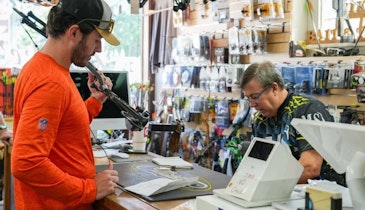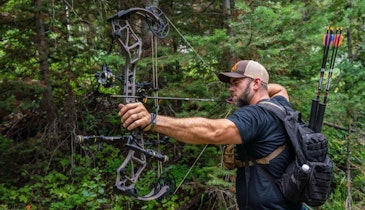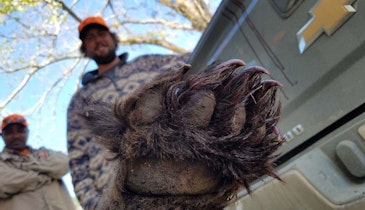Photo: John Hafner
“Optimistic people play a disproportionate role in shaping our lives,” said psychologist and Nobel Prize winner Daniel Kahneman. “Their decisions make a difference; they are inventors, entrepreneurs, political and military leaders — not average people. They got to where they are by seeking challenges and taking risks.”
Change “lives” in that quote to “industry,” and it pretty much sums up how I view the archery industry. We are, by and large, an industry of optimists, an industry built by people who saw a chance to do something different, to take the road less traveled, to make a difference by doing something they’re passionate about. Inventors building problem-solving products in their garages, retailers investing in ranges so local archers have somewhere to shoot, coaches creating tomorrow’s archers one kid at a time — they’re all optimists, and we’re all better for it.
I thought of that Kahneman quote when I recently came across an article about a young man named Tyler Chu. Chu is a college student at Washington State University, and he’s one of those challenge-seeking optimists I expect will have a disproportionate impact on the archery industry.
A homemade bow
Chu first encountered archery in the Lord of the Rings movies.
“Legolas was by far the coolest character,” he said. “I was enthralled by his climbing trolls and elephants, skateboarding (or rather shield-boarding) down stairs and shooting at uruks, and the overall ludicrous accuracy he had with the bow.”
Plenty of kids thought Legolas was cool. Many of them probably wanted to try archery after watching the Lord of the Rings movies. And perhaps some of them even asked their parents if they could get a bow of their own.
For most of those kids, that’s where their journey with archery ended.
But for Chu, it was just beginning. Even more impressive is the fact that Chu got his start in archery not with a cool new youth bow, but with improvised equipment.
“I asked my dad to make me a bow,” he said. “So he got a stick and some rubber bands and made me one. As I grew older, I made ones with elastic strings and stronger sticks, and when I was 12 I joined the WCW JOAD, Washington Committee of Wildlife’s Junior Olympic Archery Development club.”
College…and nowhere to shoot
When Chu entered college, Washington State University did not have an archery team. The school also had nowhere for Chu to shoot a bow.
Chu decided to change that. But even in the beginning, he knew it wasn’t going to be easy.
“I wasn’t totally expecting it to fly with the university because of the inherent connection with weapons,” he said. “I had to go through the WSU risk management committee, receive permission from WSU facilities (because I’m using WSU grounds to shoot) and petition ASWSU [Associated Students of Washington State University] Senate for funds. Surprisingly, risk management readily approved my club because apparently there used to be a rifle club, and that precedent gave my club a good setup to be approved, especially considering that a properly run archery range is actually very safe.
“Facilities were also easy to talk to. Huge thanks to the custodians who helped set up the range because without their help, I wouldn’t have been able to shoot even if I had everything else.”
Chu’s vision for an archery club looked like it might actually become reality, but there was one major roadblock in his way — money.
“Funds were the biggest problem,” he explained. “When I petitioned ASWSU, the club was still small and not meeting because we had no reason to meet. It was sort of a catch-22 because they couldn’t justify giving me money for a small club and we currently had nothing to show for it, but I couldn’t show anything because we had no reason to meet. Thus, my initial petition received zero funds.”
Persistence
Although Chu had doubts about the feasibility of the club when he first started the process, he was too close to give up.
“When I saw that the club could actually take off, I wanted to see it completed,” he explained. “I re-petitioned and received enough to buy targets, a safety net, and the tools and equipment I needed to assemble the actual bows and arrows.”
You’ll notice that Chu doesn’t mention bows and arrows. That’s because the money he received wouldn’t cover everything. He had to choose between buying targets and buying bows.
“I could have chosen to spend the awarded money on the bows and arrows, but I was told there might be some more red tape I’d have to navigate because I’m purchasing weapons with WSU funds,” Chu said.
So now Chu had a school-sanctioned archery club, and he had targets to shoot at. But there wasn’t going to be much shooting unless he had some bows and arrows.
What does a determined optimist do? They solve the problem. In Chu’s case, that meant shelling out the money himself to buy bows and arrows for the club he’d founded.
All in all, it took nearly three years for the WSU Archery Club to get off the ground.
A win for everyone
At first, Chu wanted to start an archery club at school just because he wanted somewhere to shoot. But over time, he realized he also really wanted to teach other people how to shoot.
He’s getting that chance now.
Currently, the WSU Archery Club has 52 members (besides Chu) on the roster (although Chu noted that a handful had left the university for various reasons).
“Most have very little or no experience shooting,” Chu said.
As members of the Archery Club, however, those students get a place to shoot and a certified instructor to teach them how to do so. Chu teaches Olympic recurve-style archery, although he pointed out that members of the team can choose to shoot a different style if they’d like.
That means that there are nearly 50 people shooting archery these days at WSU who wouldn’t have had that chance had it not been for one person’s determination.
As for Chu, when I asked him if he planned to continue shooting after college, he said that yes, he plans to return to his JOAD club. “Even though I’m no longer age-eligible to be considered JOAD, the club still welcomes all shooters.”
It’s just one university, one archery club, one small win. But it demonstrates the power of passion and the importance optimists play in our industry. Because now there are 50 more archers out there, some of whom may one day walk into archery retail shops to buy their own equipment. Some of them may introduce others to the sport, growing archery still further.
And I’d call that a big win for archery.






